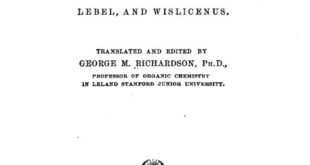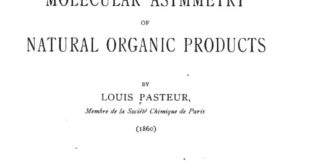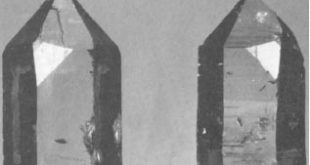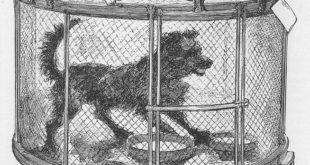December 11, 1882. — The study of rabies, of all diseases, seems to be the one which bristles with most difficulties. Clinical observation is powerless, and it is ever necessary to appeal to experimentation. But until }’esterday the significance of the simplest experiment was wrapped up in undecipherable uncertainties.
The saliva was the only part where the presence of the virus of rabies had been detected with certainty.But the saliva, inoculated by a bite or by direct injection into the areolar tissue, does not constantly give rise to rabies. Furthermore, when the malady does show itself, it is only after a prolonged incubation, the duration of which is both varying and unsettled.
It follows, therefore, that anyone wishing to draw conclusions from a set of experiments by inoculation, with regard to which no positive results have been come to, is always in fear of not having waited long enough for the results of his inoculation or else of having to deal with cases of absolute failure. Add to this the difficulty of procuring the virus at will, the repulsion and danger of handling mad dogs, and it will be easily understood that the study of hydrophobia is full of mishaps.
The situation is no longer the same.
When I made up my mind, two years ago, to undertake a sifting study of that malady, I did not deceive myself as to the difficulties and slowness of the undertaking, and understood that the first problem to be solved consisted in finding a method of inoculation which would both reproduce the disease with certainty and do away with its prolonged incubation. Such a method we have discovered and explained in a note, which, in my own name and in the name of my fellow-workers, I presented to this Academy on May 30, 1881. It consists, on the one hand, in this fact, that the principal seat of the virus of rabies is in the central nervous system, where it is found in great quantity and where it can be gathered in a state of perfect purity, and, on the other hand, in this consideration, that the virulent matter inoculated pure on the surface of the brain after trephining developes rabies with rapidity and with certainty.
Since then we have found it quite as advantageous, although producing slightly different forms of rabies, to use another method, which is still more simple in its application— namely, intravenous injection of the virus.
The two main obstacles to the experimental study of rabies had thus been got rid of.
The new investigations which I have the honour to communicate to the Academy to-day are still very incomplete, and yet, such as they stand, they are pregnant with suggestions of new views and new experiments. And, besides, to quote Lavoisier, ‘ a man would never give anything to the public if he waited till he had reached the goal of his undertaking, which is ever appearing close at hand and yet ever slipping farther and farther as he draws nearer.’
I think that my exposition of facts will gain both in clearness and in conciseness if I confine myself to the summing up of the results of our study. All details will be left aside for the present, and added later on as documents to the present communication.
- Dumb rabies and furious rabies, or, to speak more generally, all forms of rabies, proceed from one and the same virus. We have, as a matter of fact, recognised that it is possible, experimentally, to produce furious rabies from dumb rabies, and inversely, dumb rabies from furious rabies.
- Nothing is more varied than the symptoms of rabies. Every case of rabies shows, so to speak, its own train of symptoms, and there is every reason to believe that the special characters of any one case depend on the nature of the region in the nervous system, encephalon or spinal cord, where the virus has located itself and multiplied.
- In the saliva of rabid animals the virus is found associated with various micro-organisms, and the inoculations of this saliva can give rise to death in one of three modes :
- By the new microbe which we have described under the name of ‘ the microbe of saliva.
- By the excessive development of pus.
- By rabies.
- The medulla oblongata of human beings, as also that of all animals who have died of hydrophobia, is always virulent.
- The virus of rabies is met with not only in the medulla oblongata, but also in every other part of the encephalon.
It is also found localised in the spinal cord and, frequently, in all the parts of that organ.
The virulence of the cord, whether in its superior, middle, or lumbar regions, or even quite close to the cauda equina, is in no way inferior to the virulence of the medulla or of the different parts of the encephalon (brain, cerebellum, medulla oblongata, pons, peduncles). The encephalon and cord continue virulent until the time when putrefaction sets in. We have been able to preserve a rabid encephalon with its virulence intact for three weeks, at a temperature neighbouring upon 12° C. (50° F.).
- In order to develop rabies rapidly and with certainty, it is necessary, after trephining, to have recourse to inoculation on the surface of the brain, in the arachnoid space. It is similarly possible both to considerably shorten the period of incubation and to give rise to the disease with certainty, by inoculating the pure virus into the blood stream directly.
M. Roux’s cooperation for the application of those methods proved to be both active and valuable. He has acquired such skill in it that accidents after the operations have come to be exceptionally rare. By having recourse to those methods, which are so favourable to the experimental study of the disease, rabies now declares itself at the end of the sixth, eighth, or tenth day.
- Rabies communicated by intravenous injection of the virus very often exhibits characters which differ considerably from those of furious rabies supervening upon a bite or after trephining, and it is likely that many cases of silent madness have passed unobserved. In such cases of rabies, which could be termed spinal, early paralysis is a common symptom, whilst the habitual fury and rabid barks are absent or rare; but, on the other hand, frightful itching of the skin is at times a marked phenomenon.
The details of our experiments would tend to show that after inoculation of the poison into the blood system, in the way we have indicated, the spinal marrow is the region first attacked, the virus locating itself and multiplying there before spreading to other parts.
- Inoculation not followed by death, of the saliva or blood of a rabid animal into the veins of a dog, does not subsequently preserve the latter against the development of fatal rabies after a new inoculation of the pure virus made either on the brain after trephining or into a vein. (These results are in opposition with those announced to this Academy hy M. Galtier on August 1, 1881. His experiments had been made on sheep.)
- We have met with cases of spontaneous cure after the first symptoms of rabies had alone appeared, but never after the advent of the acute symptoms.
We have also met with similar cases in which, after an apparent cure, the disease broke out anew, with acute symptoms followed by death, as in ordinary cases.
- In one of our experiments three dogs were inoculated, in 1881. Two of them rapidly took the disease and died. The third one exhibited the first symptoms only, and then recovered.
This third dog, inoculated afresh, on the brain, and on two different occasions, in 1882, could not be made to take rabies, so that the disease, although mild in its symptoms, did not occur a second time. This observation constitutes a first step towards the discovery of the prophylaxis of rabies.
- We at the present time have in our possession four dogs which are not susceptible of taking rabies, whatever method of inoculation be used and whatever also the virulence of the rabid material employed.
All control dogs, inoculated at the same time, took the disease and died.
Those four dogs comprise the one mentioned in paragraph 10. Are the others, like that one, refractory to the disease owing to a previous slight unnoticed attack, from which they recovered, or are they so by nature, if so it be that there are dogs naturally refractory to rabies? We shall investigate the hypothesis on an early occasion.
One last remark. Man never contracts hydrophobia except after the bite of some rabid animal ; in order, then, to preserve him against that terrible disease it will be enough to find out some way of preserving dogs. That result is remote still, but may we not be permitted, in the sight of the facts above referred to, to hope that it is not beyond the reach of modern science?
It was through the kindness of M. Bourel, veterinary surgeon in Paris, and a gentleman well known for his writings on hydrophobia, that we obtained the two first dogs which served for our first experiments, one with furious madness, the other with dumb madness (December 1880). Since that time the disease has been kept up uninterruptedly in my laboratory. On several occasions we have been enabled to make use of dogs that had died of rabies at the Veterinary College at Alfort, owing to the zeal in helping us of Messrs. Goubeaux, the manager, and Nocard, the learned professor of that school. Quite recently, too, M. Eossignol, a veterinary surgeon in Melun, forwarded to us the head of a cow that had died of rabies after the bite of a mad dog.
It is interesting to learn that already all the animals (the last one only this morning) inoculated with the nervous matter of that cow’s head, on November 22 last, have now died of rabies. Inoculation was performed after trephining, and the parts used were the following : the medulla oblongata, the middle lobe of the cerebellum, the right sphenoidal lobe, the left frontal lobe. It is evident, therefore, that all the parts of the encephalon of the cow had proved to be favourable media for the cultivation of the virus. And yet all these parts appeared to be perfectly healthy, except the left frontal lobe, which was intensely congested, and the medulla, which was but slightly so.
The preceding propositions are the result of inoculation-experiments on rabies numbering more than two hundred, and carried out on dogs, rabbits, and sheep.
 Pasteur Brewing Louis Pasteur – Science, Health, and Brewing
Pasteur Brewing Louis Pasteur – Science, Health, and Brewing 


